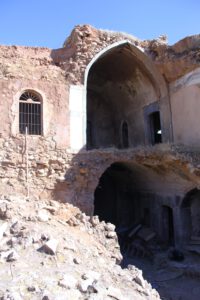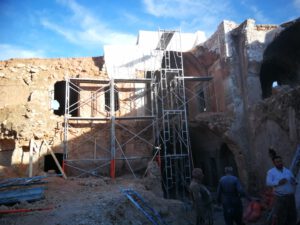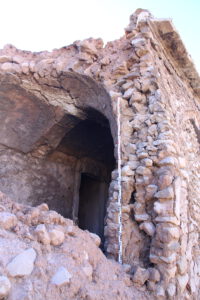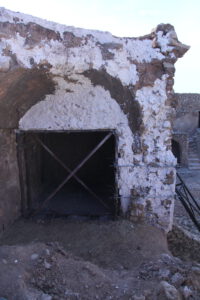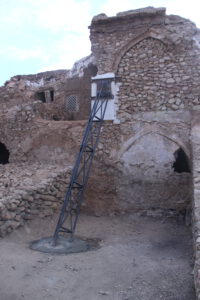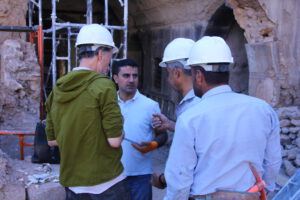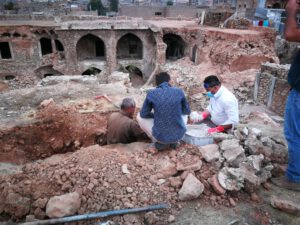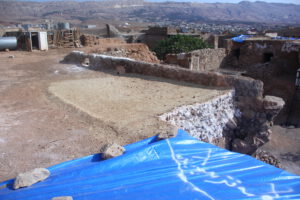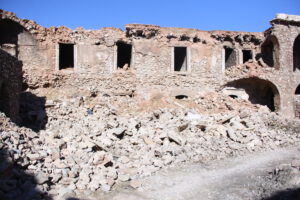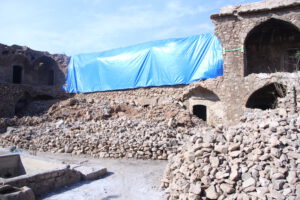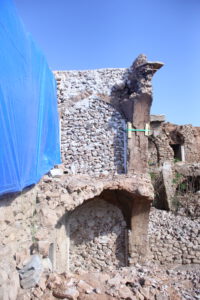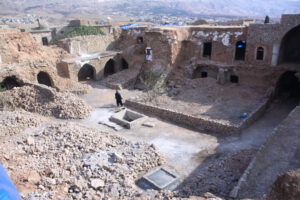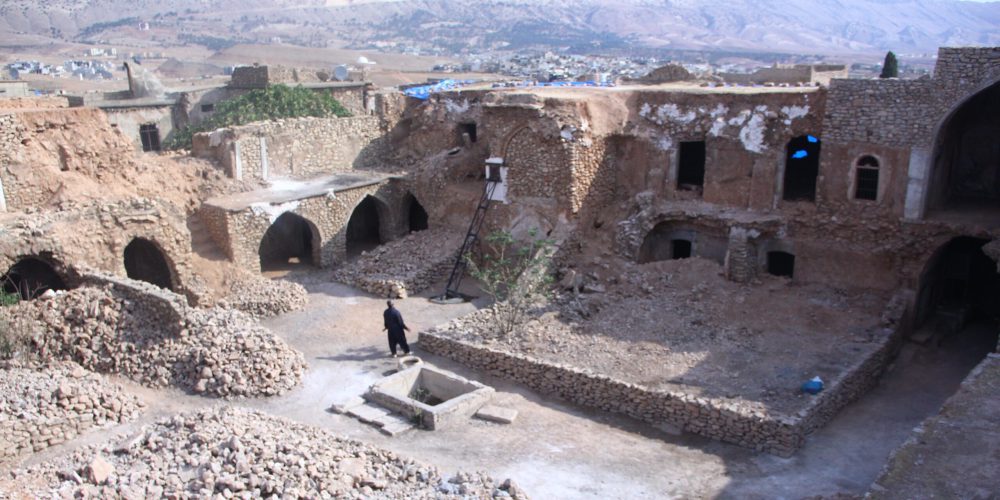
Koya Grand Khan Safeguarding
Location:
Koya, Kurdistan-Iraq
Client:
WADI e.V.
Completion:
2021-2022
Subject:
Emergency Safeguarding
Cooperation:
ALIPH Foundation, Department of Antiquities, University of Koya, Technical Univeristy of Prague, Palacky University, University of West Bhoemia
Location:
Client:
Completion:
Subject:
Cooperation:
Koya, Kurdistan-Iraq
WADI e.V.
2021-2022
Emergency Safeguarding
ALIPH Foundation, Department of Antiquities, University of Koya, Technical Univeristy of Prague, Palacky University, University of West Bhoemia
The Grand Khan, dating back to 1861-2 AD must be considered as one of the key buildings representing old Koya. It provides a typical example of a Khan of that period and is one if not the only preserved example in the region of northern Iraq. The building, however partly ruined, is still rich of interesting details, like the lintels and reveals made of so called „Mosul Marble“ and partly decorated with encarvings. Former repairs and stabilization measures are visible in many parts of the structure.
Before the execution of the safeguarding measures, the building was documented in its current state, using laser scanning and photogrammetry.
The aim of the emergency stabilisation work was to prevent further losses to the historic building fabric. Components at risk of collapse were secured with reversible interventions. In collaboration with local craftsmen, the deterioration of the khan was halted and time was gained to prepare for a more comprehensive conservation programme.
www.aliph-foundation.org/en/projects/safeguarding-the-old-town-of-koya
